Before I began this project, I only knew where Schertz was located.I almost decided to research a completely different city, when I mentioned this assignment to my step-grandmother. She said I should research Schertz because Lula Mae knows a lot about the town. Lula Mae, my step-father's great aunt, turned out to be a historian for Schertz, and is married to Sebastian Schertz's great grandson Walter Schertz. She had all kinds of information for me on this project! What I find interesting about this story is that before this project I didn't know I had a conection to this town. Granted it's almost an insignificant connection, marriage is the only way I know these people now. But I find it ironic that I am now researching the history of part of my family's origin! On top of that I might have never guessed we were the most important part of Schertz's history. Before this project the only thing I knew about Schertz is that when I was young my grandmother took me to swimming lessons at their public pool. I even still have the completion certificate.
 Walter and Lula Mae Schertz
Walter and Lula Mae Schertz
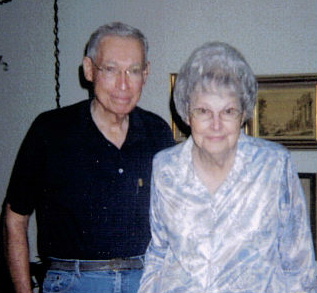
The town of Schertz had gone through a couple names throughout the years. Before the founding fathers came to the area it was known as Cibolo Pit. The name comes from the Indians that inhabited the area,in Spanish it means buffalo. The Indians that orginally lived there were the Karankawa Indians, and Lipan Apaches, but were driven away from the area by the agressive Comanche's. At this time, this place was just a rural area mostly inhabited by Indians, wild game, and sporadic white settlers. Eventually both the Indians and the buffalos dispersed as the area's culture changed due to more immigration of white settlers. Businesses were started including saloons, a post office, mercantile. The settlement came to be known as Cut-Off, which was the official name of the post office, and hence the new name of the settlement. The namme Cut-off is odd, but has a logical origin. The Cibolo creek runs through the area, and during the rainy season, it tends to flood the area, virtually cutting off any way in or out.
Mercantile Stores in 2005
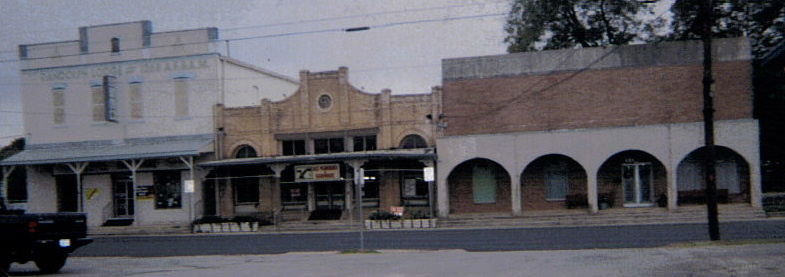 In about 1843 the Schertz family immigrated from Alsace-Lorraine., which is now mostly French territory. Mr. Sebastian Schertz bought about 300 acres of land. Despite his purchase, in 1851 he decided to go to Missouri where he heard of gold being found. Schertz sold the land to Joseph Pfeil. A neighboring family that also immigrated with the Schertz's, the Bettingers, traveled along with them. During their travels, the women of the expedition became homesick for the territory the once settled, which was then still called Cut-off. After considering the bitterness of the winter, they decided to turn around and go back to the place the Schertz family would forever call home. When they got back "...according to the land deed records in Guadalupe County files Sebastian Schertz purchased 307 acres for $1,500 on November 7, 1868. This is the present site of Schertz. The land extended from the center of Cibolo Creek along the railroad tracks to Live Oak road along the north line of what is now "Aviation Heights", back to Cibolo Creek. In 1887 Sebastian Schertz sold 100 acres to his oldest son Adolph. In 1895, he sold another 100 acres to his youngest son Ferdinand. At this time these acres were called Cut-off..."(Cohen) In 1896, the second oldest son of Sebastian, William, purchased a portion of the cut-off strip from Henry Guenther.
When the Gaveston, Harrisburg and San Antonio railroad came through and needed some land for depots along the tracks, William Schertz gave the railroad some land in memory of his now deceased father Sebastian. The land on north side of the tracks was owned by William. Despite the name Cut-Off, "...later sparked by the the need for amore commonly recognized name, the townspeople considered calling it either Schneiderville or Schertz. The Schneider family owned the land on the south side of the tracks while the Schertz family owned all of the land on the north side of the tracks. However, when the Schertz family gave its land to the railroad for the depot, the town became officially known as Schertz, and the post office sign was changed to "Schertz, Texas"." (Cohen)
In about 1843 the Schertz family immigrated from Alsace-Lorraine., which is now mostly French territory. Mr. Sebastian Schertz bought about 300 acres of land. Despite his purchase, in 1851 he decided to go to Missouri where he heard of gold being found. Schertz sold the land to Joseph Pfeil. A neighboring family that also immigrated with the Schertz's, the Bettingers, traveled along with them. During their travels, the women of the expedition became homesick for the territory the once settled, which was then still called Cut-off. After considering the bitterness of the winter, they decided to turn around and go back to the place the Schertz family would forever call home. When they got back "...according to the land deed records in Guadalupe County files Sebastian Schertz purchased 307 acres for $1,500 on November 7, 1868. This is the present site of Schertz. The land extended from the center of Cibolo Creek along the railroad tracks to Live Oak road along the north line of what is now "Aviation Heights", back to Cibolo Creek. In 1887 Sebastian Schertz sold 100 acres to his oldest son Adolph. In 1895, he sold another 100 acres to his youngest son Ferdinand. At this time these acres were called Cut-off..."(Cohen) In 1896, the second oldest son of Sebastian, William, purchased a portion of the cut-off strip from Henry Guenther.
When the Gaveston, Harrisburg and San Antonio railroad came through and needed some land for depots along the tracks, William Schertz gave the railroad some land in memory of his now deceased father Sebastian. The land on north side of the tracks was owned by William. Despite the name Cut-Off, "...later sparked by the the need for amore commonly recognized name, the townspeople considered calling it either Schneiderville or Schertz. The Schneider family owned the land on the south side of the tracks while the Schertz family owned all of the land on the north side of the tracks. However, when the Schertz family gave its land to the railroad for the depot, the town became officially known as Schertz, and the post office sign was changed to "Schertz, Texas"." (Cohen)
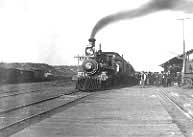 The first settlers off the area first planted wheat, corn, and oats for crops. The harvest was successful, but not as successful as cotton. In the "King Cotton" era the Schertz family discovered that cotton grew bountiful in that area and proved to be the area's major cash crop. At one time Schertz had two cotton gins, one of which the Schertz family owned and operated. The cotton gin was originally established by Sebastian Schertz in 1870 being first operated by mule power and having the capacity of two bales a day, but now is "a modern steam operated plant, with the best equipment of machinery, and had the capacity of one hundred bales of cotton a day.."(Kastner) The Galveston, Harrisburg, and San Antonio railroad came through the town in 1877. This was especially important to the growth of Schertz. Now the people were able to travel without having to ride horse-drawn wagons all the way to San Antonio. Also, because of the prosperity of cotton, the Schertz's were able to trade their cotton more easily. Schertz soon went from a small German settlement to a vivacious trading post.
The first school in Schertz was very small, it opened its doors in 1897. Back then, students were not passed on grade levels, rather, they were passed based on "reader levels". Once students reached the fourth reader level, they were finished with the school. Education wasn't neccesarily important issue back then. Something I found rather funny is that the first teacher, Christian W. Koch, obtained his teaching certificate from Sam Houston College at the age of fifteen! On February 3, 1917, Adolph Schertz gave two acres of land to the school district to build a new school. A two story building was erected, by now, the students were classified into grades, of which the school consisted of 10. The building consisted of four classrooms downstairs, and another upstairs along with an auditorium. The school had much to offer students outside of academic studies such as volleyball, tennis, basketball, baseball, and track. Like present day UIL competitions, the school held extemporaneous speaking contests, and spelling bees. In those days, students either walked to school, or came on horse-drawn buggies. There were stalls were the students could keep their animals. Students also helped out with some maintenance of the school. doing chores like cleaning the grounds, and cleaning blackboards. Thank goodness those days have changed! In 1990, the old school building was torn down and reconstructed to what is now Corbett Jr. High School.
The first settlers off the area first planted wheat, corn, and oats for crops. The harvest was successful, but not as successful as cotton. In the "King Cotton" era the Schertz family discovered that cotton grew bountiful in that area and proved to be the area's major cash crop. At one time Schertz had two cotton gins, one of which the Schertz family owned and operated. The cotton gin was originally established by Sebastian Schertz in 1870 being first operated by mule power and having the capacity of two bales a day, but now is "a modern steam operated plant, with the best equipment of machinery, and had the capacity of one hundred bales of cotton a day.."(Kastner) The Galveston, Harrisburg, and San Antonio railroad came through the town in 1877. This was especially important to the growth of Schertz. Now the people were able to travel without having to ride horse-drawn wagons all the way to San Antonio. Also, because of the prosperity of cotton, the Schertz's were able to trade their cotton more easily. Schertz soon went from a small German settlement to a vivacious trading post.
The first school in Schertz was very small, it opened its doors in 1897. Back then, students were not passed on grade levels, rather, they were passed based on "reader levels". Once students reached the fourth reader level, they were finished with the school. Education wasn't neccesarily important issue back then. Something I found rather funny is that the first teacher, Christian W. Koch, obtained his teaching certificate from Sam Houston College at the age of fifteen! On February 3, 1917, Adolph Schertz gave two acres of land to the school district to build a new school. A two story building was erected, by now, the students were classified into grades, of which the school consisted of 10. The building consisted of four classrooms downstairs, and another upstairs along with an auditorium. The school had much to offer students outside of academic studies such as volleyball, tennis, basketball, baseball, and track. Like present day UIL competitions, the school held extemporaneous speaking contests, and spelling bees. In those days, students either walked to school, or came on horse-drawn buggies. There were stalls were the students could keep their animals. Students also helped out with some maintenance of the school. doing chores like cleaning the grounds, and cleaning blackboards. Thank goodness those days have changed! In 1990, the old school building was torn down and reconstructed to what is now Corbett Jr. High School.

Taj Mahal building at Randolph Air Force Base
Randolph Air Force Base was I guess the biggest boom to Schertz in the late 1920's. A lot of farm land was bought as the Air Force needed 2000 acres for the Air Academy. There were three sites considered. The present site was chosen because after some research, the site showed the fog was less in this area and lifted earlier in the day, and meant more flying time..."(Lula Mae Schertz) Not only did the Air Force base boost Schertz's economy, but it gave a boost to the surrounding areas such as, Selma, New Braunfels, Seguin, and San Antonio as well.
"Guadalupe County is dotted with little known, historic family cemeteries that have been forgotten by time and generations. In the olden days, there were no public cemeteries as we know them today. A family would designate a couple of acres of the family ranch as a cemetery. As the years spun by, younger generations move away, these old burial grounds remain, often to be preyed upon by vandals, and assaulted by weather. There are four burial sites in Schertz laid out by the earlier settlers and all still have families living in the area for grounds upkeep."(Lula Mae Schertz)
The Schertz United Methodist church got it's start from devoted and charitable members of the area. After a two week revival in July, 1903, Mr. William A. Schneider donated an acre of his land to build a church on. Once the acre was cleared of all the brush and mesquite trees, many people donated many days of labor to the construction of the church. The women who helped organize the congregation, also helped solicit money from other congregations in the area. Mr. C.F. Blumberg owned a lumber yard in McQueeney, Texas, he supplied all the lumber need to complete the project at exact cost. The contractor that was hired to supervise the construction also agreed to donate 10 percent of the salary he made off this project to the new congregation! Once the church became active, it soon consisted of a Sunday school, young adult bible study group, and the United Methodist Women of the United Methodist church group. A fire in 1952 destroyed part of the educational building, but was soon rebuilt, and improved.
On December 10, 1910, 16 farmers from Schertz and surrounding areas gathered together to develop an easier means of communicating with each other. They formed the Farmers Rural Telephone Company. The first telephone wires in Schertz were strung along barbed wire fences across the cotton fields. The chief operator Mrs. Bruno Schultz had a busy job of connecting not only the calls from the local residents, but as well as calls all the way to Germany, Japan, and other foreign countries. Not all the residents of Schertz owned a telephone. In this case, if a call came in for one of those people the operator had to walk to that person's house and notify them, that they have a phone call. Talk about being kept on hold a long time! The Farmers Rural Telephone Company was located at 511 Exchange, Schertz and was sold to Southwestern Bell Telephone Company October 13, 1958 for $135,000.00. Eventually Southwestern Bell Telephone Company sold the building to Mr. and Mrs. Burton to be used as their residence. Here I have included the rules of using a telephone in those days, they're quite hilarious!
Original Telephone Company Building
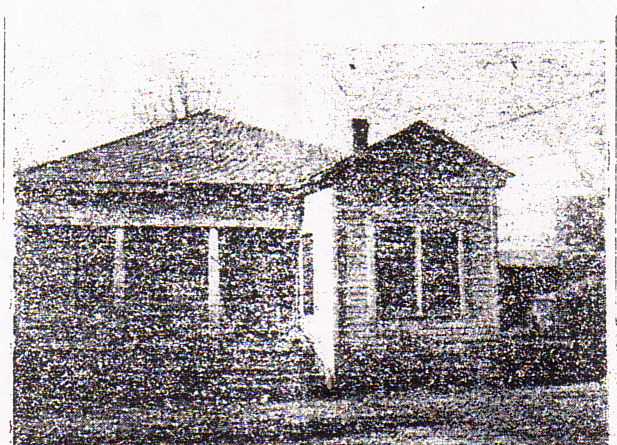
Rules and Regulations of the Company
The telephone shall not be used before 5:00 am or after 10:00 pm from April 1 to October 1, and not before 5:00 am or after 9:00 pm from October 1 to April 1, and not after 8:00 pm on Sunday. There will be a charge of ten cents for each call after time, unless for very urgent calls.
Always call by number. Operators have no time to look up numbers.
Ring off when through talking
Do not use phone during storms. Operators are not required to answer calls during lightning storms. It is dangerous.
Do not allow children to play with the telephone.
Know your own ring-answer it. Let others alone.
The use of radios on the line is strictly prohibited.
Put your mouth about one inch from the mouth piece when talking.
Answer promptly by saying "waiting" or "talking" when central calls in on the line to ask "Through?" If you say nothing, central will presume you have finished talking and will discontinue, there by clearing the lines.
Be prompt in answering calls.
Business messages have precedence over social. Medical calls have precedence over all calls.
Sec. 1 No member shall use the telephone for more than five minutes at any one time, and shall cease talking at the expiration of five minutes if requested to do so by any other member wishing to use the line.
Sec. 2 Ordinary conversations shall not be permitted when the use of the line is required for transmission of business or more urgent messages.
It shall be the duty of all members to see that this provision is ridgidly enforced.
Sec. 3 No abusive, profane, or obscene language shall be permitted to pass over the lines. Any person so offending shall be fined the sum of $1.00 and shall be deprived of further use of the line until the fine is paid.
Sec.4 No person shall be allowed to take down the reciever for the purpose of listening to a message passing over the line. Any memeber violating this provision shall be fined the sum of $5.00 and shall be deprived of further use of the line untilt he fine is paid.
The Telephone Building in 2005
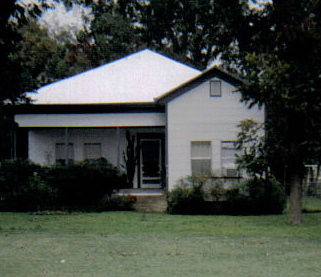
Schertz,Texas
More Schertz Info
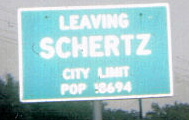
Annotated Bibliography
Shepard, Betty. "It's Been a Long Trail from 'Cutoff' to Schertz" The Herald, Thursday, August 11, 1977. p. 8
This article goes into detail about how many hands the land eventually named Schertz has passed through. Then explains the Schertz family history, such as where they originated from, and how the town got both its names.
Schertz, Lula Mae. "A History of the Schertz United Methodist Church" Hand typed article
This article explains how the Methodist church came about. It also contains a picture of the original building.
Cohen, Muriel B. "The Telephone Company has Interesting History" The Community News, Thursday, March 10, 1955This article pretty much only explains new development plans the Farmers Rural Telephone Company of Schertz has. In an attached document, that was hand typed, explains the "rules" of using the telephone, they're confusing, and hilarious!
Schertz, Lula Mae. "Schools" Hand typed article.
Here are pictures of students, and the school's origin. Students were not passed based on grade levels, but by "reader" levels. Once they passed the "fourth reader" they were finished with the school. Today, the school is known as Corbett Jr. High.
"Descendent Returns to First Home" The Herald Thursday, November 3, 1977
The great grandnephew of William Schertz, the founder of Schertz, returns to the house he was born in to open an art gallery there.
"Depot Schertz, Texas" No author
This article explains the arrival of the railroad. Ultimately the railroad is what made Schertz a thriving town.
"Kastner Observations" John Kastner
This article describes the life of William Schertz as well as his father Sebastian. It also describes is to the minute detail of the day the railroad came to town.
"Main Street Schertz" Muriel B. Cohen
This article was of great use to me. It explains in great detail what the Schertz family did once they came to the U.S., and how Cut-off became Schertz.
Return to Small Town Research Projects Index

